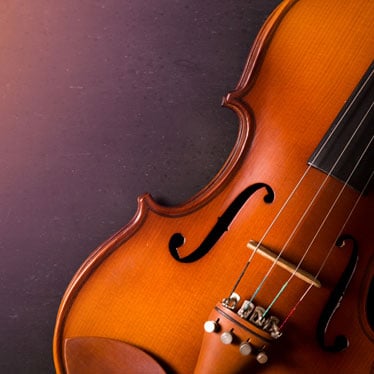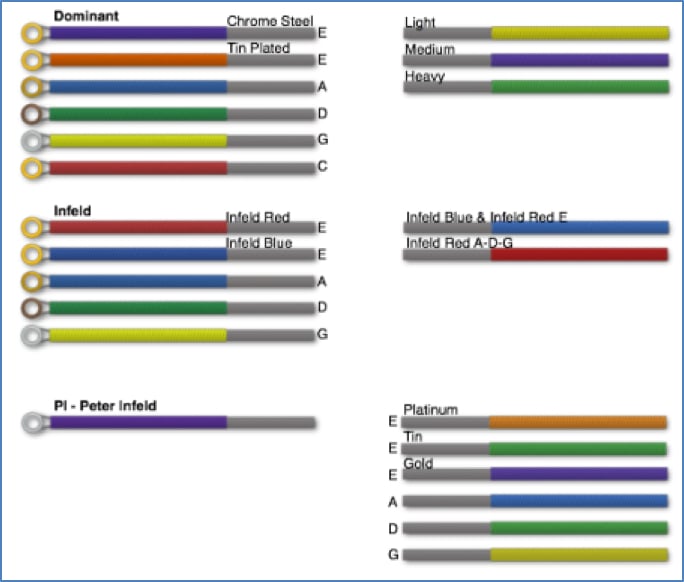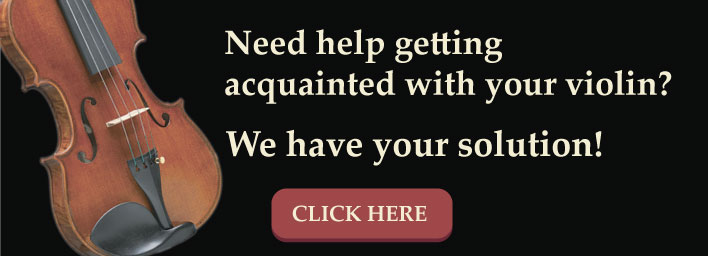Why Do Violin Strings Come in Different Colors?

If you’re doing your job as a meticulous string musician, you replace your violin strings roughly once every 300 playing hours, or once every three to six months, whichever comes first. During this process, you’ve probably noticed your strings have differently colored wrappings at the peg and tailpiece ends – and there’s a reason for this.
Colorful Wrappings Are a String’s “Fingerprint”
Those colors convey essential information when it comes to restringing your violin, or if you purchase a used violin that is already strung with strings you love, and you want to replace them with the same type.
Or, maybe you’ve merely waited so long to replace your strings, you can’t remember which kind you used to begin with – this can happen for violinists who like to mix-and-match their strings to yield a customized sound quality. Finally, there’s the student who removes all of their strings to clean the instrument, or for an instrument repair, and then can’t remember which string goes where.
In any case, the color bands at each end of the strings are lifesavers because the colorful wraps serve as the string’s “fingerprint” of sorts. String ends are almost exclusively wrapped using durable silk strands, and the range of colors and patterns (you’ll notice some of your strings may have two colors represented) allow for a seemingly infinite array of variations, so ID’s can be unique when manufacturers release new styles.
The color I.D.s, indicate:
- Who made it (the brand)
- Which set or line of strings it came from (within a brand)
- Which string note it is (E, A, D, G or C)
- The string gauge (in some cases)
- The type of coating (in some cases)
Comprehensive String I.D. References
There are extensive string I.D. references available online for violinists looking to identify one or more of their strings. One of our favorites is compiled by violinstringreview.com. To show you what these references look like, we’ve posted an example of their I.D. images for some of the Thomastik-Infeld string lines.



If you had a string in your hands that has a solid purple wrap at the tailpiece end, you’re looking at a string from the Peter Infeld line, designed to produce a nuanced array of sound color, dynamic range and a well-balanced mix of power and elegance. Peter Infeld strings are with more intermediate and advanced players in mind – violinists who’ve developed a more discerning ear.
Looking at the color on the peg end of the same string will tell you which string it is and, in the case of the E string, you’ll also know whether your string is coated with platinum, tin, or gold.
On the flip side, you may have a string that has one of a few different shades of green on the tailpiece, in which case you probably have a string from their Vision line. Don’t be surprised if you notice that only one or none of the other strings match the one you’re looking at. That’s because Vision strings can be mixed-and-matched with other synthetic core strings for a more versatile, personally customized sound and feel. Mixing-and-matching strings is not uncommon for violinists and other string musicians, a reminder of why these color-coded string combinations – and I.D. charts – are so important.
Make Sure You’re Playing the Right Strings For Your Level and Playing Style
Knowing what strings live on your first violin can also help you determine whether they’re the right strings as you or your child embarks on the violinist’s path.
If you buy a used violin for your beginner, and you notice the strings are from the Peter Infeld or Infeld lines, you may want to swap them out since these lines are targeted for the more advanced player. In this case, you’d want to purchase strings designed for beginners, such as Alphayue violin strings – which are affordable and produce high-quality sound – designed to provide sound consistency as beginners and newer players work to develop their ear and muscle memory.
Good luck working through the puzzle of which string is which on your violin, and here’s to choosing the violin strings that are best suited to your playing and listening preferences.
Sponsored by Thomastik-Infeld


